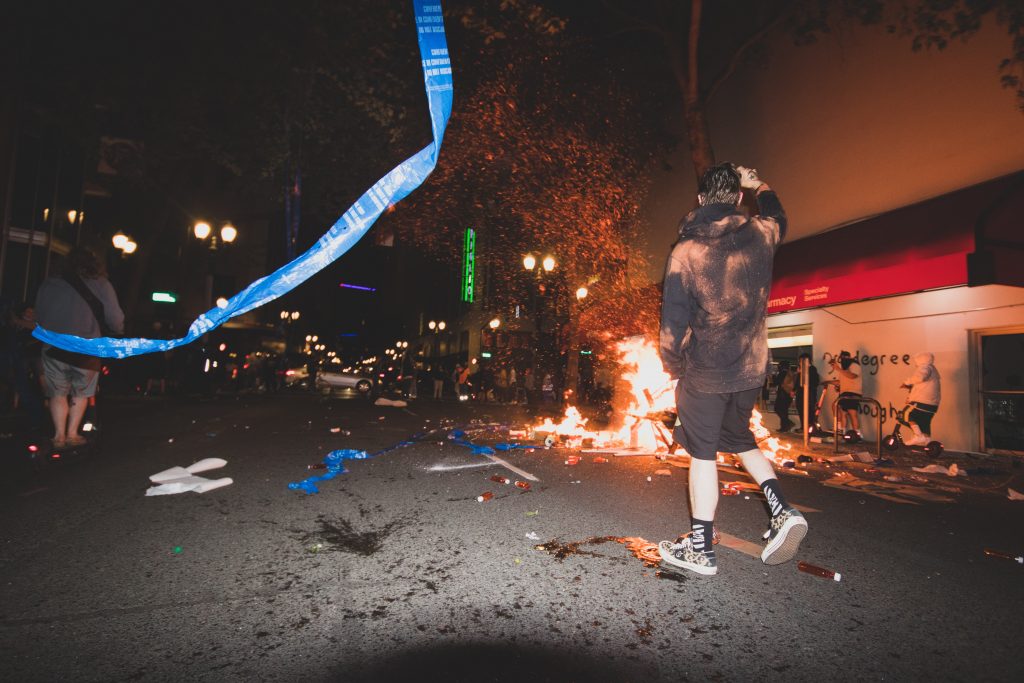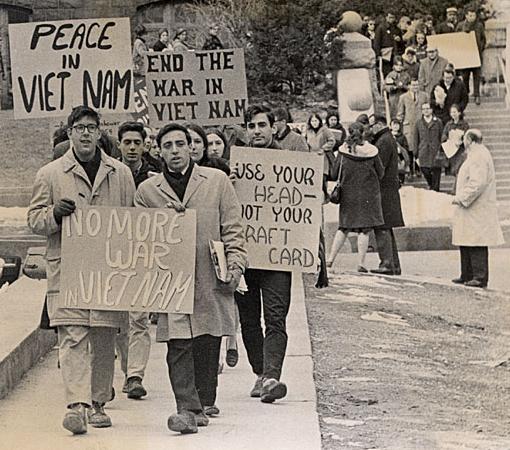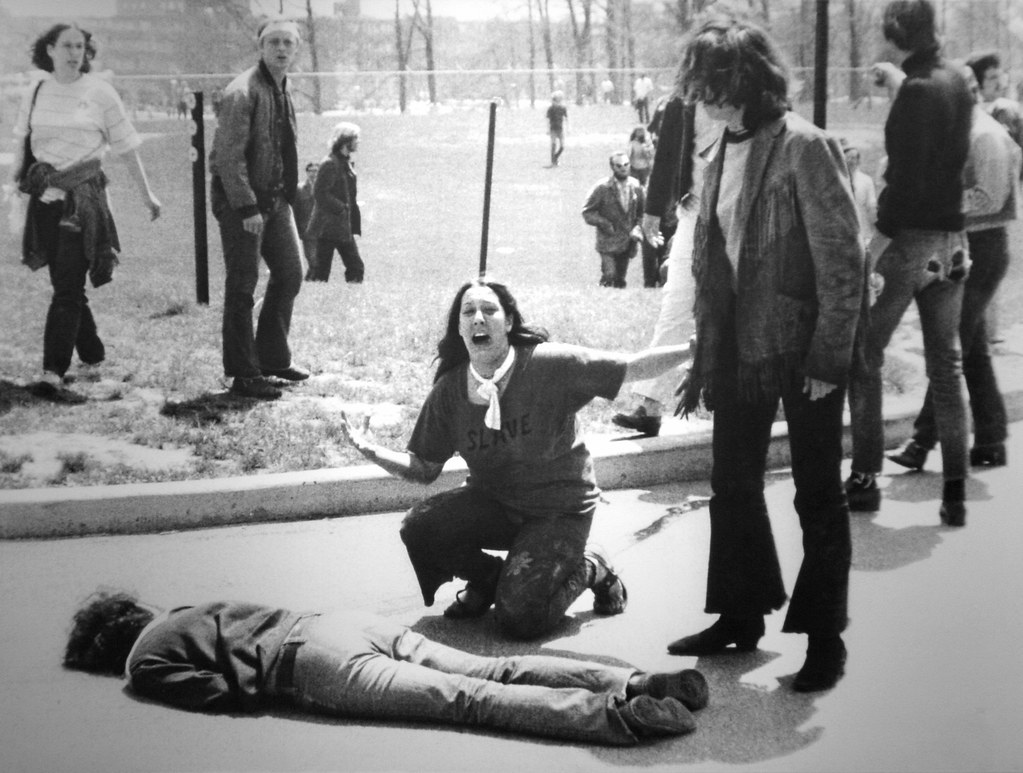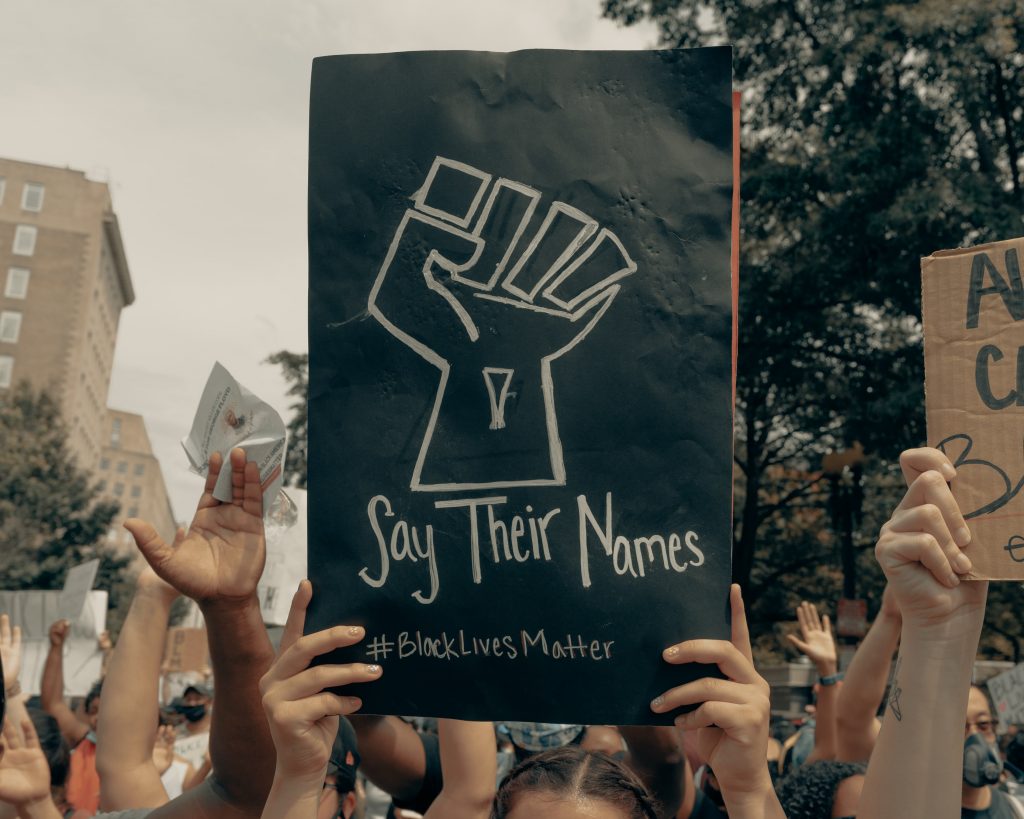Black Lives Matter has become the mantra for people all over the world. This is how an old white guy identifies with Black Lives Matter.
Yes I’m a recent convert to that message, and while I support the movement, I don’t necessarily support the organization. I don’t know enough about it to support it right now. I do know they ask for money a lot. And I don’t know what they are doing with that money.
Also, see my post on how I believe we can improve race relations in America.
The recent spate of police shootings of black men and women have rekindled anger toward police departments across the country, even to the point where one precinct in Portland was taken over by protesters.
This study of 17 states showed that while blacks were in the minority of those killed by police (32%), this was disproportionate to the percentage of blacks in those states that were studied (15%).
Peaceful protests are the majority, but there have been some violent ones which destroyed communities, including Atlanta.
These killings unnerved me as well, and while I believed we needed some sort of change, I just couldn’t relate to it.
Violent protests

I didn’t feel the anger that many did over those killed, as a matter of fact it was the violence that I was getting angry at. People were looting, burning, and generally destroying places of business. Shops that were owned, managed, and frequented by people who had nothing to do with the police killings of blacks were damaged.
My thoughts were that these riots only perpetuate the stereotype of the violent black man. I didn’t fully understand the anger.
And while I still do not believe that violence is the answer, something clicked in me the other night. Something from my youth that made me angry all over again.
05.04.70
That date has stuck with me for over 50 years now. I was 16 and facing the prospect of going to Vietnam to fight a war I didn’t agree with.
I had been an avid reader of the newspaper (kids, ask your parents) for some years now. Something I saw my Mama do daily, so I guess I picked up the habit. I had gotten interested in politics because of said war in Vietnam.
While we did have a couple of anti-war protests at my high school, in which I participated as well, there was never any violence. These were peaceful walkouts just to show our dislike of the war.
Colleges and Universities however had larger and more organized protests, some with high profile guest speakers.

“The players tried to take the field, the marching band refused to yield”
(Above by Don McLean from “The Day the Music Died, copyright 1971)
On this particular day however, at Kent State University in Ohio, an estimated 2,000 students gathered in the common area of the school. This was an area designated for such protests.
From Wikipedia:
The protest began with the ringing of the campus’s iron Victory Bell (which had historically been used to signal victories in football games) to mark the beginning of the rally, and the first protester began to speak.
Companies A and C, 1/145th Infantry and Troop G of the 2/107th Armored Cavalry, Ohio National Guard (ARNG), the units on the campus grounds, attempted to disperse the students. The legality of the dispersal was later debated at a subsequent wrongful death and injury trial. On appeal, the United States Court of Appeals for the Sixth Circuit ruled that authorities did indeed have the right to disperse the crowd.
The dispersal process began late in the morning with campus patrolman Harold Rice riding in a National Guard Jeep, approaching the students to read an order to disperse or face arrest. The protesters responded by throwing rocks, striking one campus patrolman and forcing the Jeep to retreat.
Just before noon, the Guard returned and again ordered the crowd to disperse. When most of the crowd refused, the Guard used tear gas. Because of wind, the tear gas had little effect in dispersing the crowd, and some launched a second volley of rocks toward the Guard’s line and chanted “Pigs off campus!” The students lobbed the tear gas canisters back at the National Guardsmen, who wore gas masks.
When it became clear that the crowd was not going to disperse, a group of 77 National Guard troops from A Company and Troop G, with bayonets fixed on their M1 Garand rifles, began to advance upon the hundreds of protesters. As the guardsmen advanced, the protesters retreated up and over Blanket Hill, heading out of the Commons area. Once over the hill, the students, in a loose group, moved northeast along the front of Taylor Hall, with some continuing toward a parking lot in front of Prentice Hall (slightly northeast of and perpendicular to Taylor Hall). The guardsmen pursued the protesters over the hill, but rather than veering left as the protesters had, they continued straight, heading toward an athletic practice field enclosed by a chain link fence. Here they remained for about 10 minutes, unsure of how to get out of the area short of retracing their path: they had boxed themselves into a fenced-in corner. During this time, the bulk of the students congregated to the left and front of the guardsmen, approximately 150 to 225 ft (46 to 69 m) away, on the veranda of Taylor Hall. Others were scattered between Taylor Hall and the Prentice Hall parking lot, while still others were standing in the parking lot, or dispersing through the lot as they had been previously ordered.
While on the practice field, the guardsmen generally faced the parking lot, which was about 100 yards (91 m) away. At one point, some of them knelt and aimed their weapons toward the parking lot, then stood up again. At one point the guardsmen formed a loose huddle and appeared to be talking to one another. They had cleared the protesters from the Commons area, and many students had left, but some stayed and were still angrily confronting the soldiers, some throwing rocks and tear gas canisters. About 10 minutes later, the guardsmen began to retrace their steps back up the hill toward the Commons area. Some of the students on the Taylor Hall veranda began to move slowly toward the soldiers as they passed over the top of the hill and headed back into the Commons.
During their climb back to Blanket Hill, several guardsmen stopped and half-turned to keep their eyes on the students in the Prentice Hall parking lot. At 12:24 p.m., according to eyewitnesses, a sergeant named Myron Pryor turned and began firing at the crowd of students with his .45 pistol. A number of guardsmen nearest the students also turned and fired their rifles at the students. In all, at least 29 of the 77 guardsmen claimed to have fired their weapons, using an estimate of 67 rounds of ammunition. The shooting was determined to have lasted 13 seconds, although John Kifner reported in The New York Times that “it appeared to go on, as a solid volley, for perhaps a full minute or a little longer.” The question of why the shots were fired remains widely debated.
“Four Dead in Ohio”
From “Ohio” by Neil Young, copyright 1970

As a result, thirteen students were hit by National Guard gunfire, one paralyzed and four killed. Two of the dead were simply in the crowd, observing from 300 feet away.
The old white guy now gets what the anger’s all about.
So I told you that, to tell you this. The other night while making supper I had on the CSNY album “4 Way Street”. While the song “Ohio” was playing, the feelings of anger came on me again and I understood why many people today feel the way they do. It’s a simple song that Neil Young wrote right after Kent State. (Yes, that’s what we called it. Not “The Kent State Killings”, or “The Kent State Massacre”. Just Kent State). The song only has one verse and a chorus that ends with the chant: “Four Dead in Ohio”.
It’s that chorus that got to me, and a lot of people my age.
I wasn’t in Ohio in 1970, I was in Atlanta. The killing of four innocent, unarmed students had nothing to do with me, but I can remember the anger I felt when it happened.
As Neil Young said in that song: “what if you knew her and found her dead on the ground?”
We held another walkout/protest that week, but while we had no intentions of doing anything violent, who knows what might have happened if the circumstances were different. What would have happened if the police showed up in riot gear? I tend to believe that sometimes that might cause more of a problem.
Say their names
While the protestors today have Michael Brown, George Floyd, Rayshard Brooks, and Breonna Taylor, my generation had Allison Krause, Jeffrey Miller, Sandra Scheuer, and William Schroeder.
Again, I emphasize that violence isn’t the answer, and I don’t condone it in any form, but now I can somewhat understand the anger that has built up among many people today.

What is the answer?
I don’t know. Peaceful protests work, but they take a while. Violent riots only anger those on the other side of whatever you’re protesting, causing more violence.
Yes, black lives matter. Also white lives matter, blue lives matter, all lives matter. But we must give attention to the group that is in danger right now. If I were to get pulled over by the police for a broken tail light, I wouldn’t fear for my life. Many people today can’t say that.
Maybe the answer really is to talk about it. Try to understand the other side. Just because you’re OK, doesn’t mean everyone is.
A good perspective is Tom Merrit’s Daily Tech News Show. Normally a tech news podcast, but on June 1st he put together a special edition called “A Time to Listen”. I was skeptical at first, but when Tom said to “please listen,” I did. And I’m glad I did. This episode can be found here.
Together we can do this.